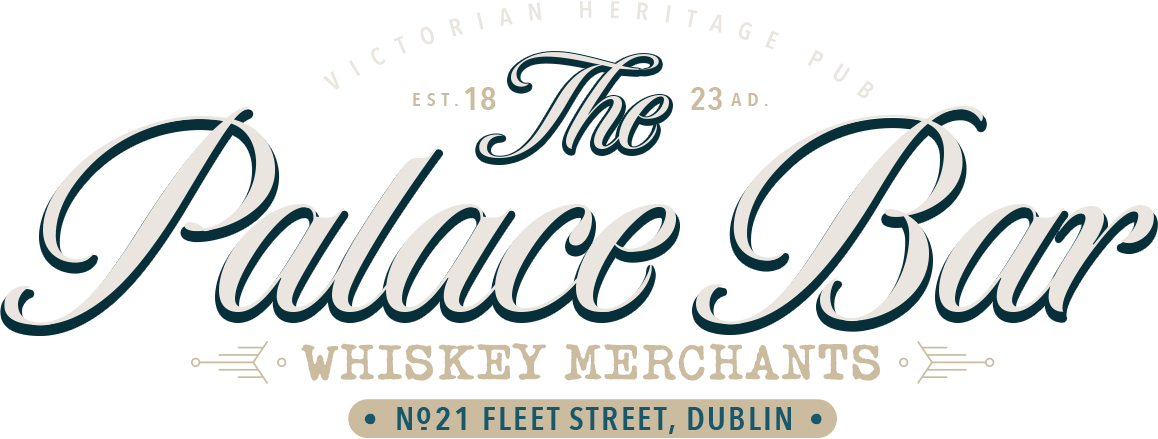
The Three Literary Musketeers.
During the 1940s and 50s the Palace Bar became the acclaimed watering hole of Dublin’s literati and the Fourth Estate. Though money was extremely scarce in post-war Ireland, there always seemed to be enough to facilitate imbibers overcome the prevailing gloom and doom of the country’s economic stagnation.
But amidst all of this angst a new literary dawn was born, as a new generation of Irish artists gave expression to modernist Ireland – a departure that was viewed suspiciously by both Church and State. Pride of place in this endeavour were the three literary musketeers, Kavanagh, Behan and Myles, all of whom shared a great affinity with alcohol, and in particular the Palace Bar, though not necessarily in one another’s company.
Patrick Kavanagh was the pioneer (not in the literal liquid sense) of the three musketeers to frequent the Palace. Already established as the haunt of journalists and men of letters, the Palace became a beacon of enlightenment for Kavanagh. Becoming a regular here in the late 30s, he just listened for a long while, totally entranced. This was the epicentre of literary Dublin described by Kavanagh himself as the ‘temple of art’. Gradually Kavanagh’s intellect and his spark of genius became too much for his Palace contemporaries whom he despised because of their cushy jobs, while he himself toiled writing creative verse, the real form of art.
Brendan Behan was a lover of pubs, all kinds of pubs, and was no stranger to the Palace. Behan was a terrific playwright and balladeer, and in the early days a consummate imbiber of Guinness. It would seriously dent his honour and his sense of pride if any mortal could lower a pint faster than him. But Brendan was loud, confrontational, derisive, frequently abusive but also incredibly witty. Each setting was a stage for Brendan and he always needed an audience. He took grave exception if his style of showmanship was not appreciated, professing that a combination of bogmen and bourgeois were plotting against him.
Myles na gCopaleen, aka Flann O’Brien, aka Brian O’Nolan, was perhaps the most committed drinker of the three, meticulous and methodical. A civil servant, by boring profession, following a brilliant career at UCD, Myles was a literary giant, a wonderful satirist and an endless prankster. Constantly taking satirical aim at the repressive and conservative nature of the Irish State, particularly the licensing laws, Myles poked incessant fun at the institutions in which he himself worked.
Myles was the most respectable of the three both in dress and behaviour and he loved the intellect of the Palace. He loved flirting with the licensing laws, which he termed ridiculous and too stringent, and on one occasion during a police raid in the Palace, he was discovered hiding in the telephone box in the back room. He apparently told the arresting Garda that he was waiting 45 minutes for the operator to connect him with a transatlantic call.
Kavanagh, Behan and Myles were sometimes friends but more frequently adversaries. Kavanagh despised Behan who chided him constantly: “You’re only a minor poet anyway”, was Behan’s standard jibe. “Since Homer, we all are,” was Kavanagh’s reply. Myles admired Kavanagh the poet, but not the man whom he described as “the Monaghan toucher”. On Brendan Behan’s death, Myles wrote: “Brendan Behan’s death is the triumph over the irrepressible by the irreplaceable. He exuded good nature. He excelled in language and was a total master of bad language.”
The three literary musketeers died within four years of each other. For over 20 years their flame burned fiercely and creatively as their literary echo reverberated around the Palace walls. Today their memories are enshrined forever in the Palace’s rich cultural heritage.
